Four Flies on Grey Velvet (1971)
Directed by: Dario Argento
Written by: Dario Argento, Luigi Cozzi, Mario Foglietti
Starring: Francine Recetta, Jean-Pierre Marielle, Michael Brandon, Mimsy Farmer
AKA 4 MOSCHE DI VELLATO GRIGIO
ITALY/FRANCE
AVAILABLE ON SEPARATE UHD and BLU-RAY RELEASES: 28TH APRIL, from SHAMELESS FILMS
RUNNING TIME: 102 mins
REVIEWED BY: Dr Lenera

Roberto, a drummer in a rock band, is being stalked by a mysterious man in sunglasses. While leaving the studio one night, he confronts him and, during a struggle, kills him by accident, an act witnessed by another mysterious person wearing a Mr. Potato Head-like mask. Roberto’s life immediately becomes a misery as he’s tormented by a variety of things including photographs of the killing appearing in his house, the masked person turning up, and his cat being killed, all of which he keeps from his wife Nina. It turns out that his maid Amelia is involved and tries to blackmail the masked person into getting more money, but she’s then murdered by him or her, and Roberto’s problems get worse when his disliked cousin Mina comes over to stay at his house. With the aid of private eye Gianni Arrosio, he sets out to uncover what’s going on, but the dead bodies don’t stop….
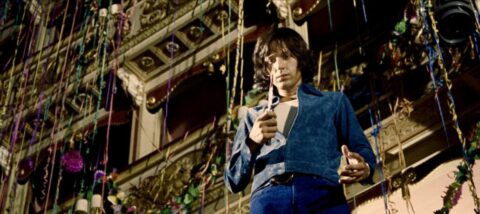
For a great many years Four Flies On Gray Velvet was the hardest to see of Dario Argento’s movies; including even his fairly obscure Western Five Days In Milanthat he made next, with only Greek, France, and Belgium offering official video tapes. Us Argento fans were used to having to put up with bootlegs of variable quality to see most of his films uncut, but the one I had of his third feature was so awful looking I couldn’t even watch it all. Of course things eventually changed, though it took ages, the film achieving an almost mythical status. The third film in Argento’s so-called “animal trilogy”, after The Bird With The Crystal Plumage and The Cat O’ Nine Tails is the most eccentric. While it’s certainly in a similar vein, it really lets loose with extreme visual stylisation such as odd shots and strange editing, not to mention weird dialogue and a script which sets out to subvert matters at a time where loads of Gialli were being made. It doesn’t work at at all as a murder mystery, with only one real suspect and clues withheld from us, but it also seems that Argento and co-writer Luigi Cozzi are just having some cheeky fun, and there’s much thematic and psychological stuff that’s of considerable interest, Argento pouring out his fears and obsessions into a film which he intended for a while to be his last. But what does the title relate to? By removing a victim’s eye and shooting a laser through it, apparently one can see the last image that the deceased saw because the image is retained on the retina for several hours after death. So on a computer screen are four dark smudges against a gray background which look like – you’ve guessed it – four flies on grey velvet!
The Cat O’ Nine Tails wasn’t the big hit that The Bird With The Crystal Plumage had been, but nonetheless Argento’s producer dad Salvatore found a major distributor this time in Paramount before the script was completed. It was at first to have telepathy as one of its main themes; Argento would use that later and more than once. The “image caught in the retina” plot device was actually based on a newspaper article about a scientific experiment conducted in Germany, itself based on a superstition that dead eyes can convict a murderer, which was why a lot of gangsters shot out eyes. Bird‘s Tony Musante asked for too high a price to play the lead, Terence Stamp wanted too many script changes, Tom Courtney was vetoed by Paramount who wanted John Lennon or Ringo Starr though they were refused by Argento, and James Taylor told Argento that he didn’t “really want to be in movies”. Michael York was eventually cast but production on Zeppeljn was delayed so Argento then decided upon Michael Brandon, and unusually didn’t play the murderer when he or she’s face isn’t seen; Cozzi put on the black gloves instead. Shooting took place in Rome, Turin and Mila, the three being combined into one unnamed city, and Qayraw in Tunisia for the flashbacks. The finale involving a slow motion car crash took twelve different cars to be wrecked because the special camera used kept jamming. The original US theatrical release, which was also the version shown in most other countries outside of Italy, was cut by five minutes, losing parts of several dialogue scenes as well as shortening a bath love scene and a decapitation. It wasn’t much of a commercial success, and as stated earlier home viewing releases were very limited, Paramount actually preventing it coming out in English-speaking territories until….2009!
Boy does it begin oddly. Roberto and his band are rehearsing a rather strange rock piece with the vocal consisting of a man wordlessly wailing while we’re treated to a parade of odd shots emphasising the circular and not even being linear interspersed with one of a heart beating, including Roberto’s drum kit shown from above, the POV from inside a guitar, and three round pieces of confetti on the lens of a pair of sunglasses being worn by the guy who’s stalking Roberto. After the music. Roberto tells one of the others that he was missing his cues, but the reply is “we’re so far out no one’s gonna notice”. Okay then. Roberto follows his stalker to an abandoned opera house where he confronts him. The man denies stalking him and pulls a knife on Roberto, who accidently kills him with it. Suddenly a spotlight is turned onto Roberto and a masked person on the balcony snaps some photos of Roberto holding the bloody knife. Roberto returns home to his wife Nina. The next day, he reads the newspaper describing the dead man and receives a letter containing the ID of a certain Carlo Marosi, who indeed it was. That evening at a get-together of several band members and friends at his house, Roberto discovers photos of the incident between some records, something seen by Amelia the maid. Roberto has the first of a series of dreams about being beheaded in a coliseum in Saudi Arabia, inspired by an earlier chat about executions in that country; then he wakes up after hearing a noise and a cord is wrapped around his neck, the masked person telling Roberto “I could kill you now, but I won’t“. Roberto’s friend “God” suggests that the guy he lives with, a con artist known just as the Professor. keep an eye on Roberto and recommends a “smart and cheap” private investigator to him, Arrosio.
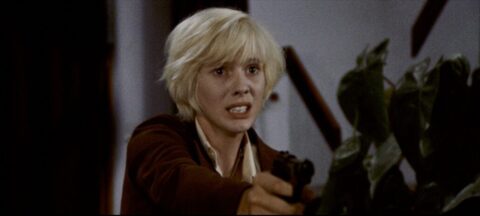
Nonetheless Roberto is getting really edgy and violently attacks the postman in the first part of a continued gag, in a film where there’s the largest amount of humour ever in an Argento film, from certain characters to odd conversations including at one point most of a story called “The Rape Of Frankenstein” [something that reminds us of Argento’s never made Frankenstein project] to a meeting scene taking place on a coffin shop where potential future customers complain about the coffins. Anyway, Amelia calls someone and says that she knows what the person is doing to Roberto. She wants more money or she’ll go to the police. And now we get a bravura set piece which is a masterpiece of suspense-building, then terror, on the level of Alfred Hitchcock or Brian De Palma – yes it’s that good. Amelia goes to a park and waits on a bench. watching children at a little playground while a fairground waltz is heard from a speaker. As the sky darkens, she realises that the last child is leaving and she stands to leave herself when she hears a person say her name. Now locked inside the park, Ennio Morricone’s music score brings on a particularly sinister piece while Amelia runs along the high wall, the camera cutting between this and somebody’s POV, and cries out for help. A couple on the other side hear her, but the guy can’t scale the stone wall. He runs towards the entrance, but is too late. Amelia screams and is obviously killed, her hand scratching the wall which has as much effect as a graphic slashing would do. Roberto has his cousin Nina come to stay and isn’t happy about it, then it’s revealed that Marosi is actually alive and well, having been part of a acheme to terrorise Roberto, and now wants out, but do we think the killer will allow this? We also begin to follow Arrosio, though Argento and Cozzi have him figure out some major clues but keep us squarely in the dark! But then again this is also a film where the thing that provides our hero and us with the killer’s identity is something neither he nor we have even seen before. This is less carelessly irritating than amusingly subversive to this critic, though others will differ.
The murders are fairly tame; when the killer reaches for a cord after bashing a face in with a club with a few times, we cut away instead of getting some nasty strangling like we got in Cat. The climax features a slow motion car crash and decapitation which has a visible line on the screen that’s from the actual film frame, but it’s still impactful and set to one of Morricone’s most haunting lullaby-like pieces he wrote for Gialli, “Come en Madrigal”, which provides some sadness. And all sorts of unusual details enhance elements, in a film which sees Argento trying out as much as he can, and later reusing and developing many ideas. A good example would be the flashbacks to the killer’s past, where he or she is in a padded cell and being shouted at; he’d go on to provide variations on this again and again, though there’s a truly bonkers moment here where the voice doing the shouting is heard again when a different character wo can’t have been present in the flashbacks is onscreen. Roberto’s Arabian dream matters nothing in terms of narrative, but it does show Roberto’s fear in both a semi-abstract visual sense and psychologically. The slightly androgynous Brandon looking like Argento, and the slightly androgynous Mimsy Farmer looking like Brandon, provide more intriguing oddness, while unusually there are some religious elements. Then there’s all this show-offy technical virtuosity throughout, from a zoom into a cat through a window after which the camera reverse zooms back out and tracks along the outside of the apartment until it then zooms in on Roberto and Nina in bed, to a whiplash series of pans and cuts following a phone call across town from a blackmailer to a murderer – not to mention just weird portions of cinema like when Roberto is driving his car outside but, because we cut several times to the camera gliding into his destination so it looks at one point like he’s driving up some stairs!
The character of God [played by Bud Spenser], was actually in the novel The Screaming Mimi but didn’t appear in Bird which was an official adaptation of it, nor indeed the 1958 version that retained the novel’s title. The purpose of God, who has a parrot called Jerk Off, is merely to dispense obvious advice and recommendations until the end. A lot of time is taken up by Jean-Pierre Marielle’s gay private investigator Arrosiol, who might seem like something of a caricature these days but we like him and are actually touched by the climax of his journey. By contrast Brandon’s Roberto isn’t too likeable, especially when he gropes his cousin while she’s giving him a bath and a massage [which is admittedly weird], followed by sex. As for Farmer as Nina, she’s rather weak, which is odd considering her striking performance in The Perfume Of The Lady In Black two years later. Deep Purple were initially intended to write the music; in fact they did compose who opening track to be played by the band onscreen, but when editor Francoise Bonnot was sacked after much disagreement with Argento and replaced, it was decided that Italian musicians had to be used to be used to keep the film largely Italian. Morricone’s somewhat cheesy rock was disliked by Dario and Salvatore, but I love it and feel it adds positively to the film’s delectable oddness, Morricone’s diverse score also being one of the highlights of his Giallo period. As for Four Flies itself, I feel that it’s the best of the trilogy to which it belongs, and – if you don’t agree – you may at leastadmit that it’s the weirdest. It rarely takes the conventional route in telling its already wacky tale of threat, dysfunction and revenge.
4K UHD HDR edition with Dolby Vision encoded from a 4K restoration of original camera and sound materials [supervised by Argento’s DOP Luciano Tovoli]
When eventually released on disc, the problems didn’t end there, the film being plagued by very unsatisfactory transfers, with the first DVD from Germany’s Retromedia being of a scratchy 33mm print of the cut version with full screen VHS inserts of the removed bits, and the second US one of the full edit from Myra Communications having terrible sound on the English track and 40 seconds missing. Blu-rays were also problematic, with Shameless having to use a VHS source for those 40 seconds and their version having a poor picture. They also omitted the visible film frame by zooming in on the shot. Koch Media’s German Blu-ray and Surf’s Italian one were an improvement in many respects but still had to use a 33mm source for the 40 seconds and the English version still sounded poor.
Eventually North America’s Severin Films presented a UHD and Blu-ray restoration with no inserts plus both versions. Shameless’s release utilises the same source and it looks terrific to my eyes even though I can only support Blu-ray at the moment; I don’t own the Severin but doubt it looks much different from the Shameless. The muted colour scheme actually looks quite striking and the plentiful blacks nice and deep. Skin tones are natural and grain is pretty evenly managed. Shameless haven’t included the shorter cut but – come on – how often would you want to watch it? It’s not like Deep Red and Phenomena where the cut versions provide a significantly different viewing experience to the complete versions.
4K UHD AND BLU-RAY SPECIAL FEATURES
Behind the Velvet Curtain: New exclusive interview with Dario Argento [29 mins]
As is often the case, rather then port over special features from previous releases, Shameless prefer to produce their own. Argento, Brandon and Cozzi were interviewed by others, so what they say will be familiar to some, though I hadn’t seen these earlier interviews so a lot of what they said was new to me. A now very elderly Argento tells us that Four Flies was something he not just “wanted to let loose on” but which was a “masked autobiography”. He then very briefly discusses the origins of Bird and his collaboration on writing Once Upon A Tine In The West with Sergio Leone and Bernardo Bertolucci before telling of how a special camera from Dresden University to film the making of metal was used for the slow motion car crash [which is longer than the two and a half seconds Argento claims it lasts], the frame being left in the shot because it was, after lots of flawed ones, a good take. He also says how Brandon would study him for his part, which must have been off-putting for Argento, and that “nobody understands why” Paramount – though he mistakenly says Universal – withheld it from home viewing for ages, though he guesses while they eventually changed their minds.
The Velvet Chronicles: New exclusive interview with star Michael Brandon [39 mins]
Brandon, who I only really know otherwise from the Dempsey And Makepeace TV series, talks with great fondness and detail about his experiences connected with Four Flies, the unusual nature of which began with Salvatore Argento visiting him in person when Brandon was living in a monastery and giving him a script printed on onion paper; when Brandon mentioned that it was violent, Salvatore came back saying “okay, your part no violence” to his surprise, which might explain why Roberto is rather passive. He gives us a good sense of what it was like on set, with him getting on well with Argento the latter even had a car pick him up to go and visit Federico Fellini, despite Argento once putting a finger in his own mouth and wiping it on Brandon’s face – honest! There are other stories involving the shooting of scenes and other cast members, then Brandon discusses its suppression, obscurity [a friend once showed him a bootleg copy in German] and resurrection, finishing with “I almost think it’s better that it happened that way”.
The Art of Murder: New excusive interview with writer and assistant dir. Luigi Cozzi [40 mins]
This is another long and detailed interview, this time from the guy who made one of my favourite “bad” films of all time, Starcrash. He says a lot of interesting stuff, beginning with the scriptwriting process which recalls the way the Once Upon A Time In The West screenwriters were asked to view lots of Westerns for ideas; Argento asked Cozzi to read lots of mystery novels from the likes of Cornell Woolwich and Raymond Chandler, and much material derived from their work was incorporated, even though the story was largely written around the murder scenes which were thought up first! He also comments on The Strange Vice Of Mrs Ward, a film made just before which contained a very similar park kill set piece, but that Argento didn’t go and see such films so he can’t have copied it. We also learn that extreme closeups of the killer’s mouth were shot but removed because it made the gender of the killer obvious. Cozzi also goes into more detail about the slow motion shot and why it took so long to realise; apparently they did their best to remove the visible frame by restaging one bit in the studio which did help. Cozzi is full of enthusiasm and either has a very sharp memory or has read up on things a lot; I could listen to him for much longer.
English opening and end credits [5 mins]
English and Italian theatrical trailers [3 mins]
English TV-spot [20 seconds]
Photo gallery [5 mins]
New English subtitles & SDH
4K UHD ONLY
Booklet by Argento authority Alan Jones
Two art cards
Poster
Serialised limited collector’s slipcase
4K UHD with Dolby Vision HDR
As someone now in his 50s who got the Argento bug in his late teens, it’s been a long, long journey to finally see a really good version of “Four Flies In Grey Velvet”. I can’t say if Shameless’s release betters or is inferior to Severin’s, but UK fans who can’t support different regions should TOTALLY snap this up. The film finally looks great and the special features provide plenty of added value. Highly Recommended!



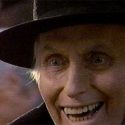
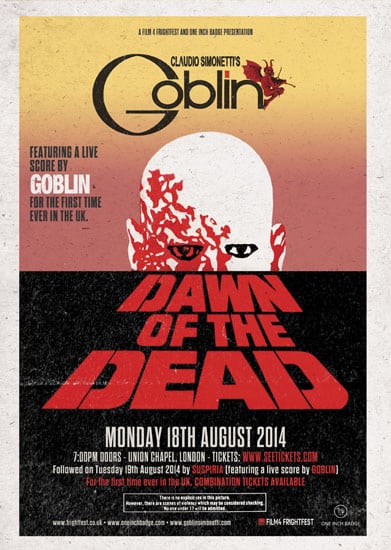

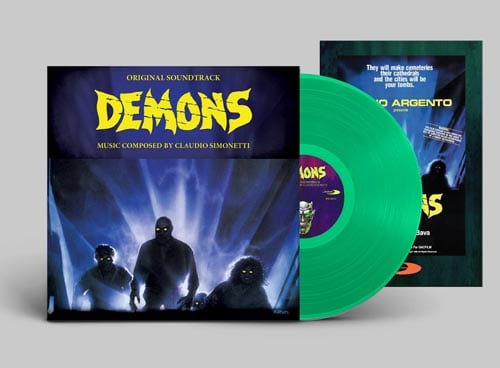
Be the first to comment